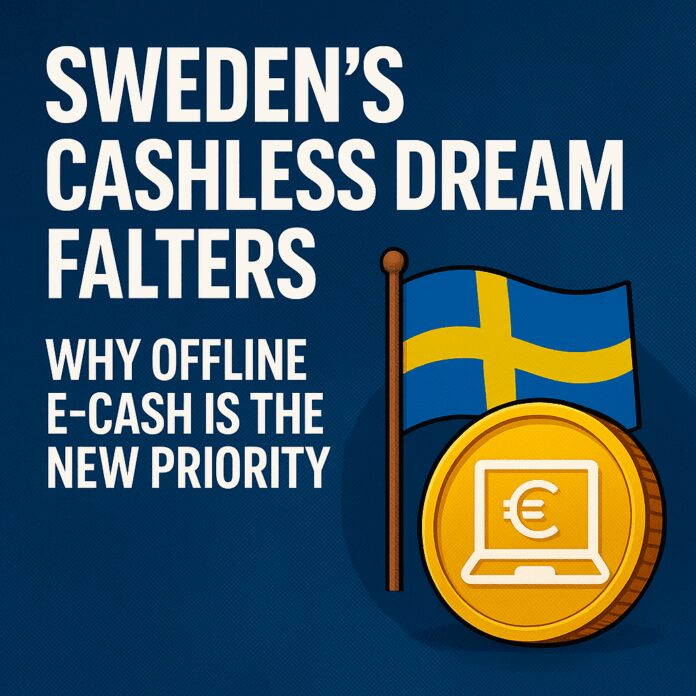Once considered a shining example of the future of payments, Sweden is now rethinking its near-total shift to a cashless society. With geopolitical risks rising and digital infrastructure under threat, the country is taking a step back — and turning its attention to a surprising solution: offline-capable digital cash.
1. A Leader in Digital Payments — Until Now
Sweden has led the global charge toward a cashless economy:
- Cash usage has dropped below 10% of all transactions
- Mobile apps like Swish dominate everyday payments
- ATMs and physical cash have become rare
It seemed inevitable that Sweden would become the first fully digital economy. But recent developments have exposed critical vulnerabilities.
2. What Happens When the Power Goes Out?
Global instability, cyberattack fears, and energy grid concerns have shifted the narrative. Swedish authorities are now asking:
What happens when the system goes offline?
- A cyberattack or blackout could instantly paralyze the payment infrastructure
- Emergency agencies are urging citizens to keep physical cash on hand
- Policymakers are pressing banks to maintain access to real banknotes
Cash, once considered obsolete, is now being reframed as a national security tool.
3. The Rise of Offline e‑Cash
The next frontier isn’t a return to paper — it’s a move toward offline-capable digital money.
Sweden and other Nordic countries are exploring ways to enable digital payments without internet or power, including:
- Smart cards or wallets that store value locally
- Bluetooth or NFC-powered transfers between devices
- Preloaded balances that can later be reconciled
These systems aim to provide the resilience of cash with the utility of digital payments.
4. Can Crypto Offer a Better Solution?
While governments develop centralized solutions like the e‑krona, the crypto world is also tackling this challenge.
Ideas include:
- Pre-authorized token balances that settle later on-chain
- Offline peer-to-peer transactions secured via hardware wallets
- Zero-knowledge proof systems for privacy without central oversight
The race is on to develop digital currencies that can function in a disconnected world — without compromising privacy or security.
5. What It Means for Investors and Projects
For crypto and Web3 projects, the implications are clear:
- Offline payments will become a feature, not a novelty
- Central banks and governments may soon favor hybrid systems — combining digital IDs, programmable money, and offline capabilities
- Privacy and decentralization may be key differentiators for crypto-native solutions
Offline-compatible tokens and infrastructures will be strategic assets in the future of digital money.
What to Watch (RateEx42 Outlook)
- Projects working on offline wallets, secure enclave tech, or e-CBDC frameworks
- Tokens tied to national currencies, especially those integrating fallback systems
- Infrastructure layers that don’t break when the internet does
Final Thought
Sweden isn’t giving up on digital money — it’s just admitting that no system is bulletproof.
The lesson?
A true digital economy must also be resilient — even when the lights go out.
The future of finance won’t just be online.
It will be offline-capable, secure, and sovereign.



